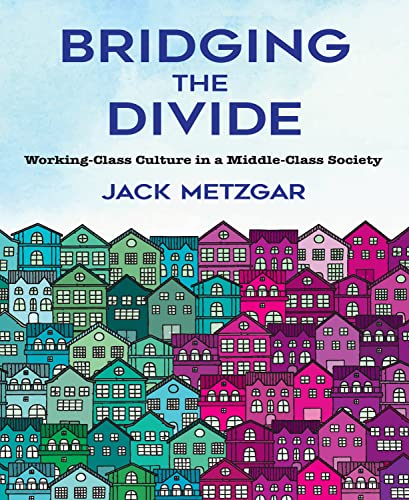The Book
Bridging the Divide: Working-Class Culture in a Middle-Class Society
The Author(s)
Jack Metzgar

Recently, journalist Noam Scheiber reported in the New York Times that “college-educated workers,” facing declining economic mobility and demanding better wages and working conditions, “may also be giving the labor movements its biggest lift in decades.” Although college-graduates are a minority among workers at Starbucks, Amazon and other targets of recent union drives, Scheiber asserted they were “playing a key role” in propelling them toward unionization.” Sociologist Ruth Milkman agreed. “There’s a class confidence,” she told Scheiber. “A broader worldview that encompasses more than getting through the day.”
In Bridging the Divide, Jack Metzgar examines that worldview and its impact on working-class activism in the United States. Metzgar is author of Striking Steel, a powerful memoir of growing up in a working-class family in the 1950s and leaving it for college in the 1960s. He also taught working-class students at Roosevelt University in Chicago for thirty years and continues to write incisively about working-class politics for Working-Class Perspectives, a blog created by the Center for Working-Class Studies at Youngstown State University. Drawing on that background, and a wealth of sociological and historical literature, Metzgar asserts that working- and middle-class Americans have distinct but complementary cultures and values. Rejecting the common view that Americans are homogeneously middle-class, or that middle-class culture overwhelms that of the working-class, he argues that collaboration between the two has been and remains essential to movements for social justice in the United States.
Central to Metzgar’s thesis is his “nostalgia” for the thirty years between the Second World War and the 1970s, which he argues was “a golden age for the American working class, including all colors and genders, followed by multiple decades of erosion and decline up to the present.” This is a controversial view, given the deep inequalities of the era and the many ways they were reinforced by policies aimed at securing advantages for heterosexual white men. Metzgar responds that African American families shared in the economic gains of the era, albeit from a smaller base than white families; and that the civil rights, feminist, and gay liberation movements of the 1950s and 1960s were as integral to the “glorious thirty” as the economic justice struggles of the 1930s and 1940s. The era was distinguished not just by rising living standards across race and gender lines but also the rise of a “new class” of college-educated professionals who were raised, like Metzgar, in working-class families.
Crediting those college-educated working-class children with building the social movements of the 1960s, Metgar argues that a similar class alliance can rebuild the egalitarian politics that propelled his generation into the middle-class. Readers may ask whether that is possible in the context of declining access to education, unions, homeownership and other benefits that undergirded the social mobility of the “glorious thirty.” It remains to be seen, for example, whether the recent surge in union elections at Starbucks and Amazon will result in the sustained growth of unions like we saw in the 1930s and 1940s or the continued decline that we’ve seen since the 1970s. Nevertheless, Metgar offers a convincing analysis of the class dynamics that created the most egalitarian period in American history and will, no doubt, be key to any renewal of that egalitarianism in the future.
About the Reviewer
William Jones is a historian of the 20th century United States, with particular interests in the relationships between race and class. He has published books on African American industrial workers in the Jim Crow South and the March on Washington for Jobs and Freedom in 1963: The Tribe of Black Ulysses: African American Lumber Workers in the Jim Crow South (University of Illinois Press, 2005) and The March on Washington: Jobs, Freedom and the Forgotten History of Civil Rights (W.W. Norton & Co., 2013). He is currently writing on the history of race and inequality in public employment. Before going to the University of Minnesota in 2016, he taught at the University of Wisconsin and Rutgers University.

0